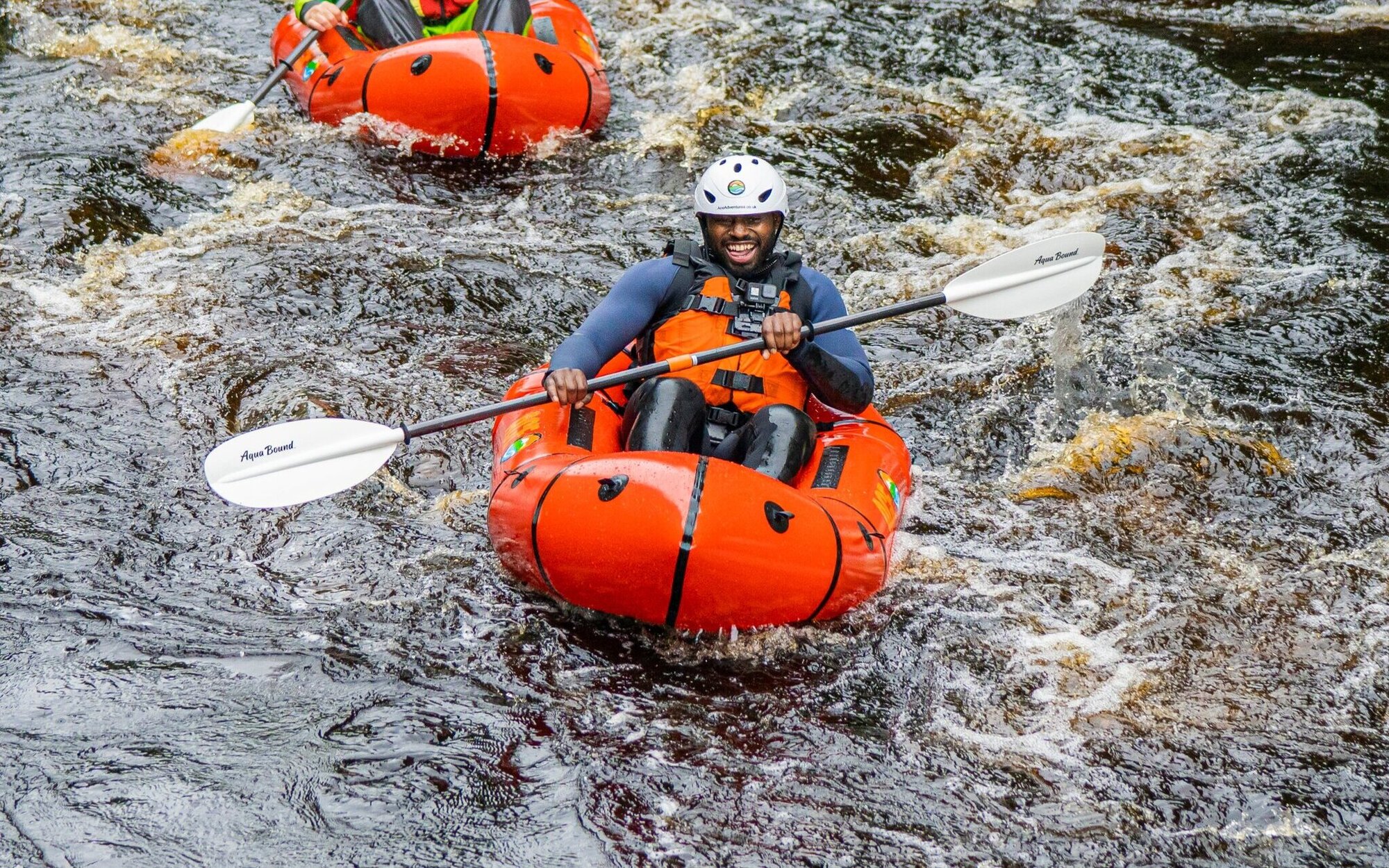Why do they call it white water rafting?
For this watersport, you sit in a raft and head down wild rivers. The roughness and rapid movement of the river makes the water froth, appearing white in places.
Are white water rafting and river rafting the same?
Yes.
How much does it cost to go white water rafting?
You'll need to check with the individual providers before booking, but expect to pay around £50 to £90 (based on adult price, around 3 hours experience).
When is the best time to go white water rafting in Scotland?
Rafting can be experienced all year round in Scotland, with opportunities for both first time rafters and adrenaline junkies. If you're looking for something gentler to start off with, then try rafting in the height of summer when many rivers are graded 2 and 3, with slower flowing and lower water levels.
For thrill seekers, try rafting just after the snow melts in early spring or after heavy rainfall when many Scottish rivers offer challenging grade 4 and 5 rafting. With fast-moving, surging white waters, you literally have to go with the flow!
Is white water rafting dangerous?
White water rafting is only as dangerous as any other watersport or activity, but full safety precautions will be in place, with:
- Wetsuit
- Buoyancy aid
- Helmet
- Trained, knowledgeable guide
- Safety briefings before setting out.
If I can't swim, can I still go white water rafting?
Yes. You'll be wearing a buoyancy aid, which is designed to keep you afloat should you fall out of the raft.
What should I wear when going white water rafting?
You'll need a swimming costume or suit for underneath your wetsuit and a pair of old trainers to wear on the rivers, which will all get wet! Bring a change of warm clothes for before and after being on the water, a towel to help dry off and a second pair of shoes to wear.
To ensure essential outdoor safety when enjoying Scotland's watersports and blue spaces, please familiarise yourself with our Outdoor Safety Guide and follow the Water Safety Code from Water Safety Scotland.
